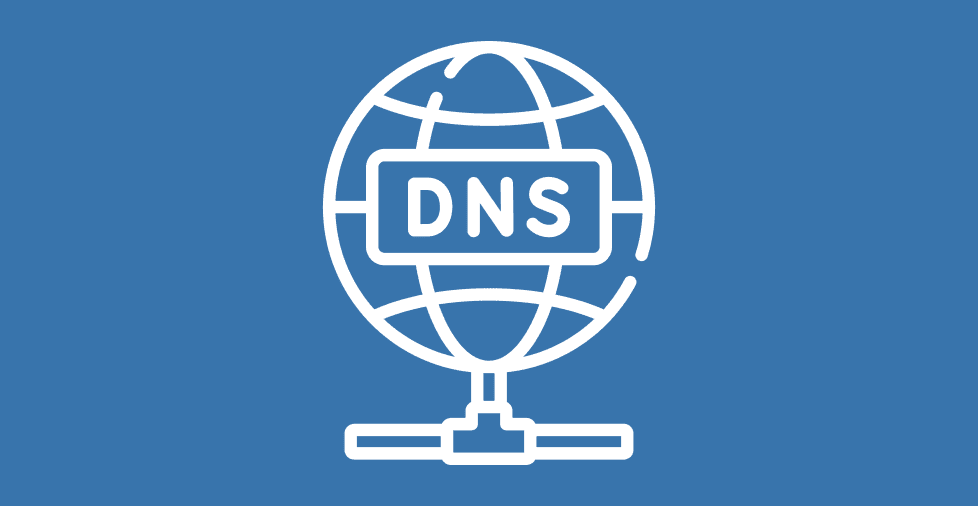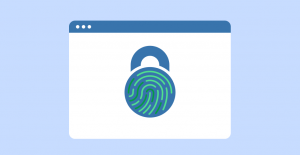Key takeaways:
- DNS zones are specific segments in a DNS namespace that enable organizations to control their domain and all its associated subdomains.
- DNS records found in DNS zones guide internet traffic to the correct servers. These records include A/AAAA for website addresses and MX for email routing.
- Managing your DNS zones and their settings effectively is important for website performance and online security. Proper configuration and monitoring help your site load quickly and protect it from cyber threats.
The internet has come a long way since its inception in the 1960s. Initially, users had to use Internet Protocol (IP) addresses (e.g., 156.154.120.112) to navigate the web. This posed a problem for people, as it was difficult to remember an IP address.
To remedy this growing issue, Dr. Paul Mockapetris invented the Domain Name System (DNS) in 1983, which translates simple domain names into their corresponding IP addresses.
In this article, we’ll discuss one of the most important parts of the DNS—DNS zones. If you’re a small business owner setting up your website, understanding DNS zones offers various benefits for your site.
We’ll explain what a DNS zone is and how it works. We’ll also include the different types of DNS zones and their common issues and solutions. Plus, we’ll cover why DNS zones are necessary for DNS security.
What is a DNS zone?
A DNS zone refers to a particular section of the DNS namespace that a specific company, administrator, or organization has authority over.
That segment consists of a domain and all its associated subdomains. This centralized control enables efficient DNS records management and administrative delegation.
You’ll get your own DNS zones when you register your domain name.
What is a DNS namespace?
The DNS namespace is the hierarchical structure the DNS uses to organize and pinpoint domains. This structure helps the DNS map human-friendly domain names to their associated numerical IP addresses.
To tie it back to the DNS zone, the DNS namespace is like a country, while the DNS zones are its regions.
Anatomy of the DNS namespace hierarchy
In the DNS hierarchy, domains are organized into different levels, such as:
- Root zone
- Top-level domain (TLD)
- Subdomains
Let’s explore how these levels work and fit together in the DNS namespace.
Root zone
The root zone contains important information about TLDs. Root servers manage this segment and direct DNS queries to the appropriate TLD servers. Additionally, this zone acts as the highest level of the DNS hierarchy.
Top-level domain (TLD)
TLDs direct users to different regions or categories on the web depending on the generic top-level domains (gTLDs) and country-code top-level domains (ccTLDs) used. They’re organized directly under the root zone and serve as the second-highest level in the DNS hierarchy.
Subdomains
Website owners use subdomains to divide their site into particular sections. This is because these segments each serve a different purpose. For example, Beehive’s site is divided into three parts, namely a blog section, a support section, and an online shop.
That means Beehive has three subdomains, which are:
- blogs.beehive.com
- support.beehive.com
- shop.beehive.com
Other terms related to the DNS namespace
DNS servers
DNS servers are computers that translate user-friendly domain names into machine-readable IP addresses. They handle DNS queries by directing internet traffic to the correct servers.
Name servers
Name servers answer DNS queries about specific domains they manage and temporarily store responses to speed up future queries.
What is a DNS zone file and its DNS records?
A DNS zone file contains data for a specific domain and its subdomains. This information helps DNS servers correctly resolve queries and direct traffic to the proper zones.
A DNS zone file has two important elements: the start of authority (SOA) record and the time to live (TTL) setting.
SOA record
The SOA record contains a DNS zone’s primary DNS server and its administrator’s contact information. It also defines important settings for zone management.
TTL
This setting indicates how long DNS servers should store DNS records before refreshing them. This ensures that the system remains updated with any changes.
Types of DNS records
Within the zone file, you’ll also find different kinds of DNS records that serve unique purposes. These records are the:
- A/AAAA records
- Mail exchange (MX) records
- Name server (NS) records
- Pointer (PTR) records
Here’s a breakdown of each DNS record’s function in the DNS zone file.
A/AAAA records
A/AAAA records are the resources that internet devices and services use in forward DNS lookups. When a user searches for a website’s domain name on the web, these records help find its assigned IP address.
The A record is intended for IPv4 addresses, while the AAAA record handles IPv6 addresses.
Mail exchange (MX) records
MX records inform the DNS system about which mail server handles a domain’s emails. These records help direct that email to the right inbox when someone sends an email to a domain.
Name server (NS) records
NS records identify the authoritative DNS servers that manage the DNS zone. These records delegate control over a domain to specific servers and ensure the correct server handles each part of the DNS zone.
Pointer (PTR) records
PTR records are important in reverse DNS lookups, which have the opposite function of standard DNS queries. Instead of finding an IP address from a domain name, a PTR record links an IP address back to a domain name.
5 types of DNS zones
Various types of DNS zones manage specific aspects of the DNS. The five kinds of DNS zones are the following:
- Primary zone
- Secondary zone
- Stub zone
- Forward lookup zone
- Reverse lookup zone
These zones allow administrators to control how domain information is distributed and accessed. Let’s get into more detail.
Primary zone
The primary zone holds the original and authoritative DNS records for a specific domain. This is where you should make changes and updates to your website, as it serves as a master copy that’s replicated to other zones.
Authoritative DNS servers store a domain’s primary zone file to ensure that when a DNS query is made, the latest and most accurate information is provided.
Secondary zone
Secondary zones are read-only copies and can only be edited through the primary zone. It’s used to balance the load of DNS queries across multiple servers to make the system faster and more reliable.
Secondary zones also act as backups when primary zones are offline. This way, DNS queries can still be resolved without interruption, even if one server goes down.
Stub zone
A stub zone holds the basic information for finding the authoritative DNS servers for a specific zone. This data includes the SOA, NS, and A records.
Unlike the secondary zones that store a copy of all DNS records, a stub zone only has enough details from the primary zone to guide DNS queries to the right place.
Stub zones help speed up DNS lookups by pointing directly to the servers that can answer the request. This reduces the need for repeated searches, which makes the process faster and less demanding on other DNS servers.
Forward lookup zone
The forward lookup zone maps domain names to their corresponding IP addresses. It’s the main tool that DNS servers use to translate domains like “vibe.com” to its IP address to connect the visitor to the website.
Reverse lookup zone
Reverse lookup zones perform the opposite function of forward lookup zones, as they map IP addresses back to domain names instead. Organizations use this zone when they need to perform reverse DNS lookups for email authentication or network troubleshooting.
Typical DNS zone issues and their solutions
DNS zones are designed to keep the internet running smoothly. However, the system is nowhere near perfect. We’ve listed some of the common DNS zone problems below:
- Propagation delays
- Misconfigured DNS records
- Slow DNS queries
- Outdated DNS records
How do we fix these issues? Here are some standard solutions.
Propagation delays
Issue: DNS changes don’t take effect immediately across all DNS servers. The delay can last between a few minutes and 48 hours, depending on the TTL settings.
Solution: You can lower the TTL value before making major changes. A shorter TTL speeds up the update process, which quickly applies the adjustments you set.
Misconfigured DNS records
Issue: DNS records like IP addresses or MX records are incorrectly configured. This poses a challenge for browsers to reach your domain or results in email delivery failures.
Solution: Regularly audit your DNS records to ensure accuracy. Tools like DNS testing services can help you detect any misconfigured or missing records.
Slow DNS queries
Issue: If DNS queries are taking too long to resolve, it can slow down your website’s loading speed. Slow DNS lookups may occur due to issues like overloaded servers or misconfigured zone files.
Solution: Implement load balancing by distributing DNS queries across multiple servers. Use secondary zones to create redundancy and improve performance. Additionally, check for any outdated records that could be slowing down queries and update them promptly.
Outdated DNS records
Issue: Outdated or stale DNS records can lead to website downtime. For instance, if an IP address changes but the DNS zone file isn’t updated, visitors won’t be able to reach the correct server.
Solution: After updating your DNS records, monitor them immediately for inconsistencies or expiration dates. You can also set shorter TTLs so that records are refreshed more frequently.
How do DNS zones help with online security?
DNS zones prevent unauthorized access to your domain by using different methods, such as:
- Delegation and redundancy
- DNS zone tracking
- DNS security extensions (DNSSEC)
It’s important to understand these approaches to help you make well-informed decisions for your site. Let’s see how each one works.
Delegation and redundancy
One of the important features of a DNS zone is its ability to allocate administrative control over specific parts of a domain. This allows organizations to manage subdomains separately. It reduces the risk of widespread issues if a single zone gets compromised.
For example, a company can manage “bird.com,” while distributing control of “blog.bird.com” or “shop.bird.com” to different teams or servers. This limits exposure in the event of an attack or security breach.
Additionally, DNS zones offer redundancy through the use of secondary zones. These zones create backups of the DNS records, which provide a safety net if the primary DNS server is affected.
DNS zone tracking
Unauthorized changes to DNS records can lead to DNS hijacking. This is when attackers redirect traffic from your legitimate site to a harmful one.
When you monitor your DNS zone, you can quickly identify suspicious activities and take action before any damage is done.
Implementing monitoring tools that provide real-time alerts can help you stay ahead of potential threats. Other than that, you can regularly audit your DNS zone to ensure that only authorized personnel can make changes to your DNS settings.
DNSSEC
The DNSSEC is an important security protocol that requires an extra layer of authentication for DNS queries. During DNS lookups, the DNSSEC verifies that the data being returned hasn’t been altered or tampered with.
With DNSSEC enabled, you help protect your DNS zone against threats like DNS cache poisoning, where hackers manipulate DNS requests to redirect users from your site to a malicious one.
Enhance your DNS management for better website performance
DNS zones are important components of the DNS infrastructure. They provide the DNS records needed to connect visitors to the right website.
They also create a clear structure that allows administrators to effortlessly organize their domain resources. Lastly, DNS zones can also help prevent cyberattacks through methods like redundancy and DNSSEC.
Take the next step and register your domain with Network Solutions. We offer reliable domain management services and resources to keep your domain secure, fast, and always available to your visitors.
Choose Network Solutions today!
Read our other articles related to the DNS and domain management:
- What Is Premium DNS (And Why Your Small Business Needs It)
- DNS Security Benefits: Why You Need It + Best Practices
- Domain Management Explained: Your Complete Guide
Frequently asked questions
You can find your DNS zone by checking your domain’s authoritative name servers, which you can determine by using a WHOIS lookup tool.
Your domain registrar or hosting provider also typically provides information about your DNS settings, where you can see the specific zone file associated with your domain.
A domain is a user-friendly name for a website, like “example.com,” while a DNS zone holds the DNS records for that domain.
A single domain may be split into multiple zones, or a single zone can manage multiple subdomains. But a zone is always associated with one specific domain.
Deleting a DNS zone removes all the records that tell the internet how to reach your domain’s services, such as your website and email. When the zone is gone, visitors trying to access your website will get an error, as their browsers can’t find the server’s IP address.
You’d need to recreate the DNS zone and all its records from scratch to restore your site.
The records in a DNS zone file are instructions that direct internet traffic to a domain. The most common records include:
A records for mapping a domain name to an IP address
MX records for specifying the mail servers for the domain
NS records for identifying the authoritative name servers for the zone




